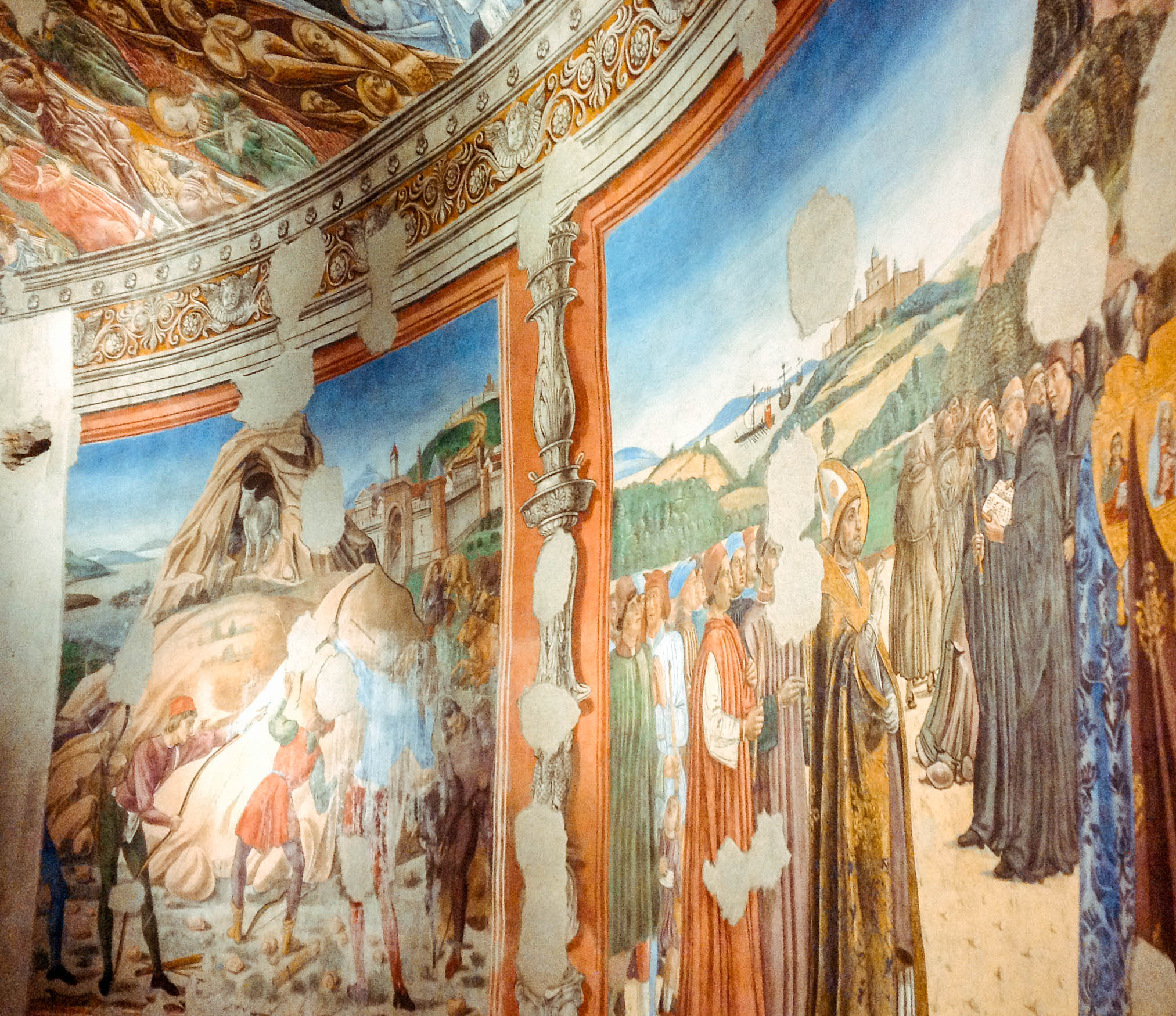

The Chapel of Cardinal Bessarione: an immersion in the Rome of the fifteenth century
Duration: 1 hour
Guided tour with exclusive opening
In 1959 the architect Clemente Busiri Vici was commissioned by the Colonna family to carry out restorations in the wing of the building bordering the Basilica of the Holy Apostles and casually made an exceptional discovery here. He found, under a dull layer, some extraordinary frescoes that adorned one of the chapels of the basilica in the fifteenth century, built at the behest of the powerful cardinal Bessarione, as his own burial place.
The paintings are attributed, on the basis of contracts and archival documents, to Antoniazzo Romano, an artist born and raised in Rome, who however assimilates the energetic linearism and the system of Florentine art, and who draws inspiration from the works of Piero della Francesca. In addition to Antoniazzo, a fundamental artist in Rome for his role in updating the figurative disciplines, but who has often remained unknown to the general public, critics have identified other hands at work. There was talk of Melozzo da Forlì, also the author of the beautiful frescoes of the choir of the Holy Apostles, unfortunately detached today (the Christ preserved in the Quirinale is very famous), and Lorenzo da Viterbo: all artistic personalities of great impact in Rome at the end of the century. The subjects represented offer visitors a cycle linked to San Michele with rare and atypical scenes, such as that of the dream of Saint Hubert at Mont Saint Michel. The choice of themes is linked to another prominent personality of fifteenth-century Italy, that of Cardinal Bessarione, who commissioned the cycle. Powerful Byzantine cardinal and true pillar of the Renaissance in Italy for his role as a link between East and West and for his patron and client activity, Bessarione tries throughout his life to bring Peace between the Church of the East and that of the West, in one last moving and desperate attempt to save the Byzantine Empire from the clutches of the Turks.
Thanks to portentous restorations that have followed up to the present day, today it is possible not only to visit this ancient chapel – hidden by a more recent one – but also to admire the frescoes that cover the surface from a particular point of view. In fact, a suspended walkway allows today’s visitors to observe the works from very close, proving the thrill of the artists’ point of view.
